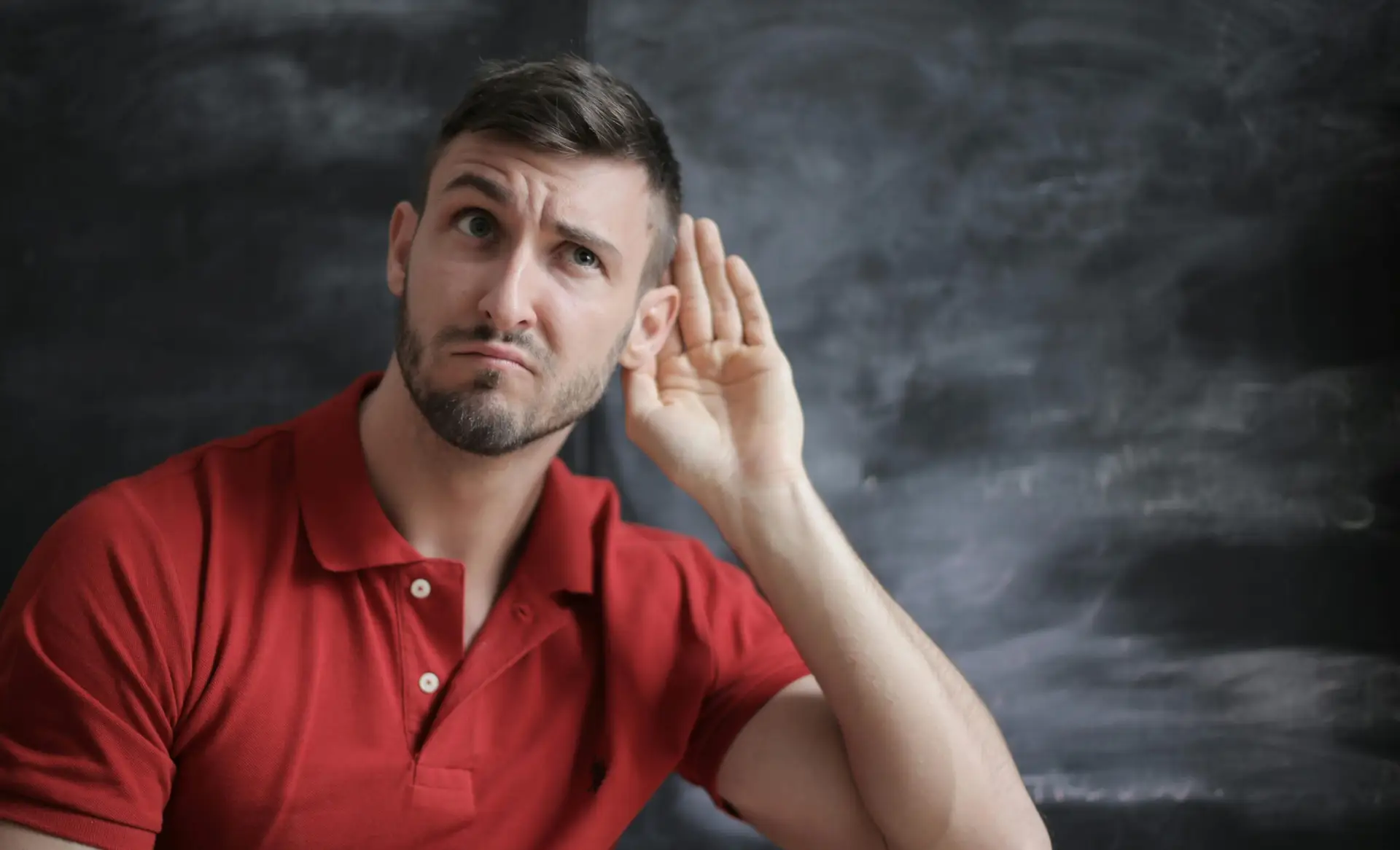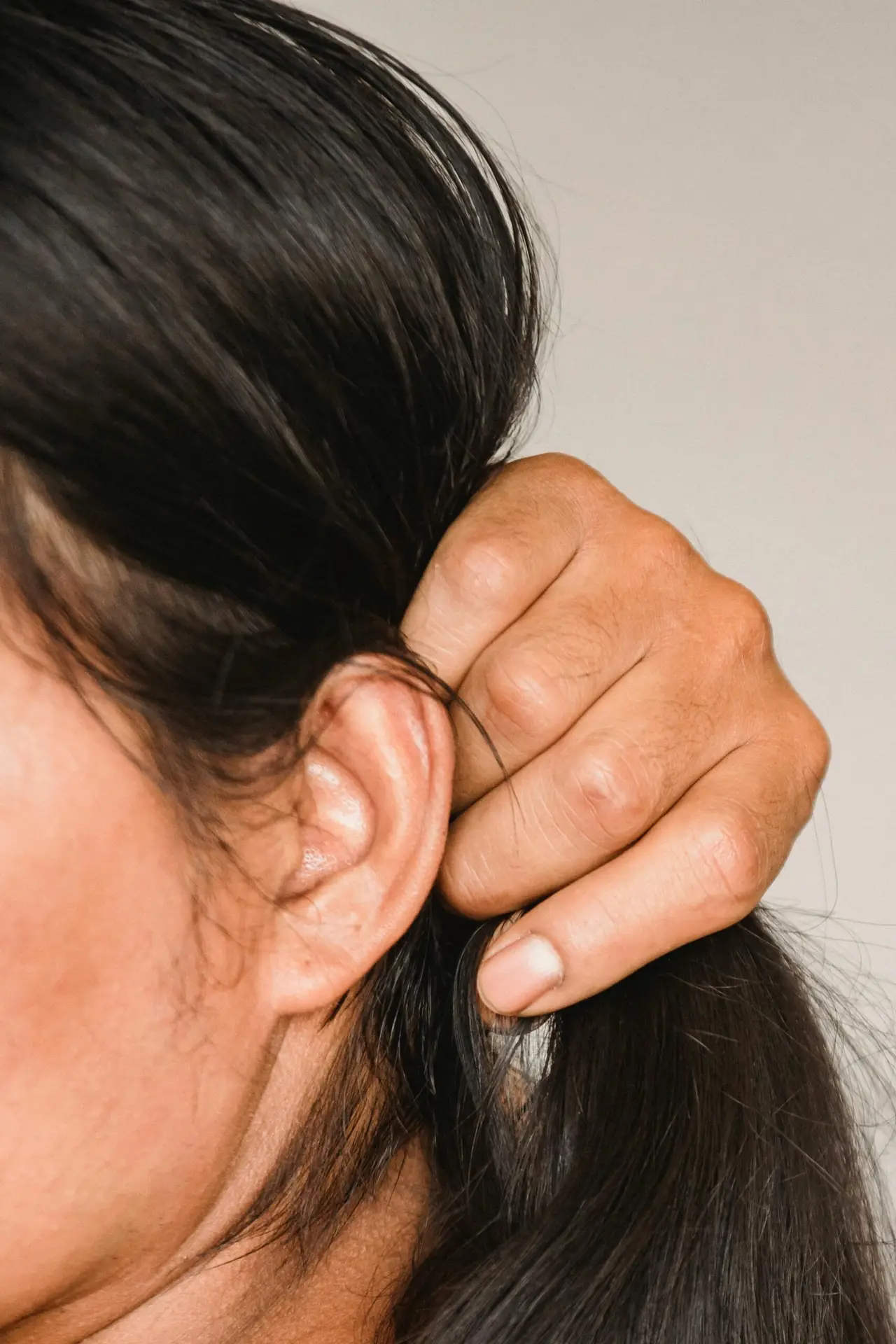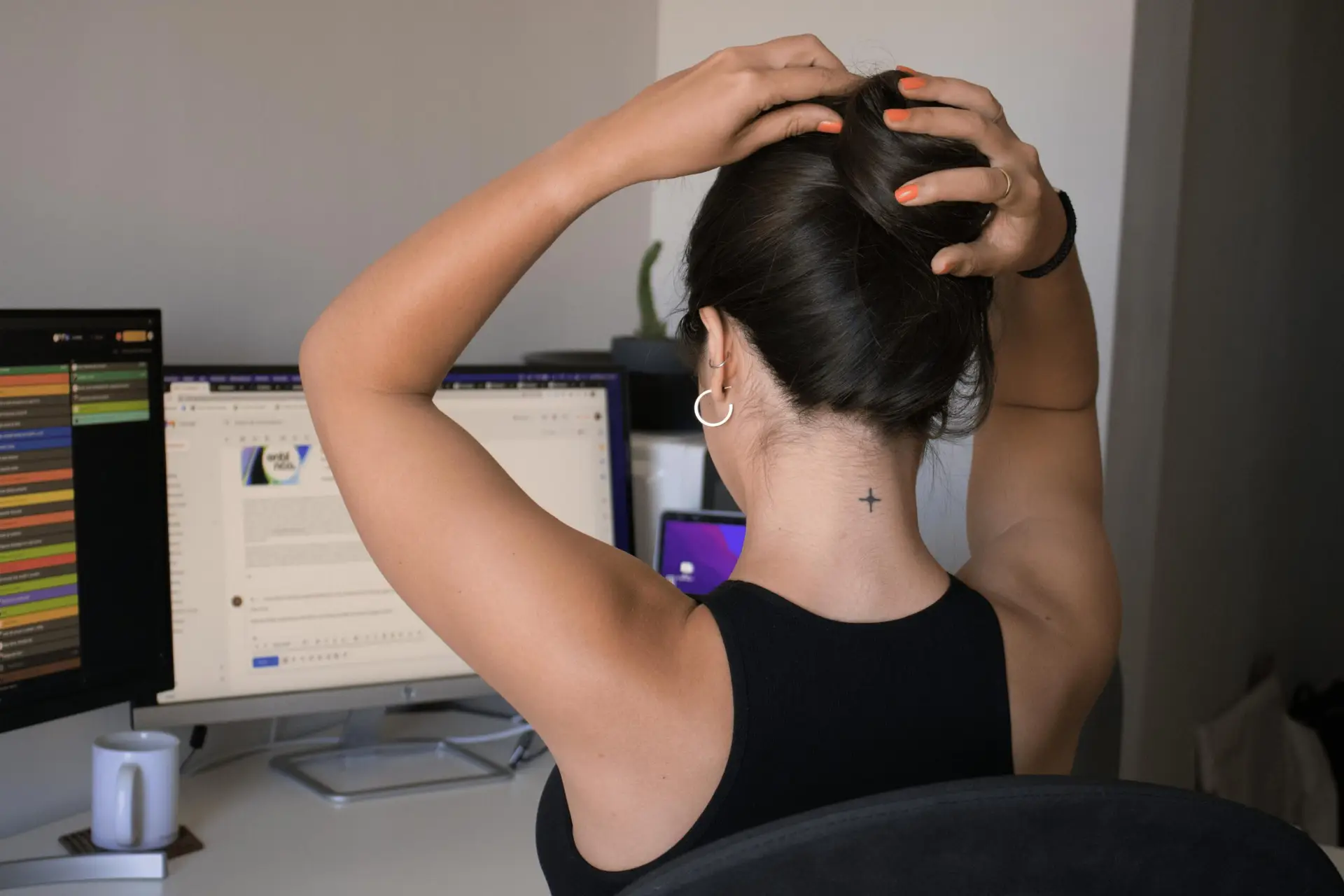
Ear Crackling: If your ears crackle when you swallow, pop when the weather changes, or feel full and pressured as if you never quite “clear” after a flight, you’re not alone. For many people in Sarasota, Lakewood Ranch, Bradenton, and across Southwest Florida, these recurring symptoms point to Eustachian Tube Dysfunction (ETD)—a stubborn, often-misunderstood problem that affects comfort, hearing, balance, and even mood. Add in barometric pressure swings, and the day can quickly unravel with ear crackling, muffled hearing, headaches, dizziness, or vertigo.
At Lavender Family Chiropractic in Sarasota, we specialize in upper cervical chiropractic—a precise, gentle focus on the atlas (C1) and axis (C2) vertebrae that sit just beneath your skull and surround the brainstem. Time and again, we see that stability at the very top of the neck can be the missing link for chronic ETD sufferers who have “tried everything” and still struggle. Our approach blends state-of-the-art 3D CBCT imaging, functional nervous system scans (Tytron), and gentle, non-twisting corrections to address root-level irritation that can influence ear pressure regulation, drainage, and vestibular balance.
Below, we’ll walk through what ETD is, why barometric pressure makes symptoms flare, how upper cervical misalignment can contribute to the problem, and what our Sarasota team—Dr. Rusty Lavender, Dr. Jacob Temple, and Dr. Will Guzinski—does to help people get steady, clear, and comfortable again.
What the Eustachian Tubes Do (and Why They Matter So Much)
Your Eustachian tubes are small, flexible passages that run from your middle ears to the back of your nose and upper throat. Their three core jobs are simple but critical:
- Equalize pressure between the middle ear and outside world
- Drain fluid from the middle ear to maintain a dry, healthy environment
- Protect the middle ear from reflux of nasopharyngeal secretions and pathogens
When these tubes open and close efficiently, you hardly notice them. When they don’t, you’ll know it quickly: ear crackling, popping, fullness, pressure, muffled hearing, and discomfort are the calling cards of Eustachian Tube Dysfunction.
Types of Eustachian Tube Dysfunction (ETD)
While symptoms look similar, ETD isn’t one single condition. The two most common forms are:
- Obstructive ETD: The tube doesn’t open well, so pressure cannot equalize and fluid doesn’t drain efficiently. This is the classic “stuck” or “plugged” feeling with persistent crackling and popping.
- Patulous ETD: The tube stays too open, causing abnormal sound perception (e.g., hearing your own voice loudly, or “autophony”). Less common, but still disruptive.
What causes these patterns? Inflammation from allergies, chronic nasal congestion, sinus issues, or recurrent infections are well-known culprits. But neuromuscular control also matters: the tube relies on tiny muscles (notably the tensor veli palatini and levator veli palatini) and coordinated cranial nerve input to open and close at the right times. That’s where the upper cervical connection starts to matter—a lot.
Why Your Ear Crackles and Pops
That rice-crispy crackling usually reflects little shifts in pressure and fluid movement as your Eustachian tube tries to open. If the tube opens late, too briefly, or with poor tone, air may squeeze in unevenly, creating the sounds and sensations you feel:
- Late opening → pressure builds → popping when it finally opens
- Sticky drainage → air/fluid moves in fits and starts → crackling
- Poor tone → inconsistent opening/closing → repetitive popping with swallowing, yawning, or altitude change
Most people chalk this up to “just allergies” or “sinuses” and leave it at that. Yet for many chronic sufferers, there’s a deeper reason the system won’t stabilize—a control problem rather than just a congestion problem.
Barometric Pressure: Why Weather (and Airplanes) Seem to Pick on You
If your ears predict storms, you’ve felt the hand of barometric pressure. Atmospheric pressure changes force your ears to re-equalize quickly. If your Eustachian tube mechanics (and the nerves that coordinate them) lag behind, you’ll feel:
- Intense ear fullness and popping
- Head pressure and sinus discomfort
- Migraine flares and neck tension
- Dizziness or even vertigo
With obstructive ETD, the tube can’t open efficiently, so the pressure gap widens until it finally “claps” open—often painfully. With patulous ETD, the tube may be too open, allowing abnormal airflow and sound changes that make every breath or word feel “in your ear.” Either way, people start calling themselves “human barometers,” reorganizing their lives around the forecast.
From Ear Crackling to Dizziness: The Vestibular Connection
Your balance system integrates signals from your inner ears (vestibular organs), your eyes, and your body’s position sensors—especially in the upper neck. When ear pressure fluctuates or fluid dynamics in the middle and inner ear are off, vestibular signaling can become noisy. That’s why many ETD patients also report:
- Dizziness and unsteadiness
- Vertigo (spinning)
- Brain fog and motion sensitivity
- Meniere’s-like episodes (ringing, aural fullness, hearing fluctuation, and vertigo)
For some people, the vestibular system is constantly on “catch-up” because the signals from the upper neck and ears don’t agree. This is where upper cervical chiropractic does its most elegant work—helping the brain, eyes, and ears agree again.
Headaches, Neck Pain, and ETD—A Three-Way Street
If you notice headaches (tension or migraine), neck stiffness, and ear crackling travel together, you’re seeing the functional clustering that often accompanies upper cervical issues. When the atlas and axis are misaligned:
- Cranial nerve irritation and autonomic imbalance may affect the muscles that open the Eustachian tube.
- Venous and lymphatic outflow around the cranio-cervical junction can be compromised, affecting drainage.
- Postural strain and muscle guarding amplify head/neck discomfort—and many patients brace their jaw and throat without realizing it, further altering Eustachian mechanics.
If you’re on a merry-go-round of decongestants, antihistamines, nasal sprays, and short-term symptom relief, yet you still get hammered by weather changes or wake with ear fullness and head pressure, it’s wise to evaluate the upper cervical spine as a potential driver of the instability.
What is Upper Cervical Chiropractic? (And Why It’s Different)
Upper cervical chiropractic focuses on the first two neck bones—the atlas (C1) and axis (C2)—which cradle the base of your skull and surround the brainstem. Rather than broadly manipulating the entire neck, upper cervical care uses precise imaging and analysis to identify minute misalignments (often just millimeters) and to deliver targeted, gentle corrections that restore alignment and neurological balance.
Key differences:
- 3D Assessment: We use 3D CBCT imaging to understand your unique anatomy from multiple angles—no guesswork.
- Neurological Scans: Tytron functional nervous system scans help us map autonomic imbalance and track changes over time.
- Gentle Corrections: No twisting, cracking, or popping. Corrections are measured, comfortable, and customized to you.
- Stability First: The goal isn’t lots of adjustments—it’s the right correction and the longest possible holding time, so your body can stabilize and heal.
How Upper Cervical Misalignment Can Contribute to ETD
Let’s connect the dots:
- Cranial Nerve Irritation and Muscle Tone
The tensor veli palatini and levator veli palatini muscles coordinate Eustachian tube opening. Their control involves cranial nerve pathways influenced by the upper cervical region. When alignment is off, neuromuscular tone can be disrupted—leading to poorly timed opening/closing and the classic crackling/popping cycle. - Autonomic Balance and Vascular/Lymphatic Flow
The cranio-cervical junction is a crossroads for autonomic regulation and venous/lymphatic outflow. If alignment is poor, drainage congestion and pressure dysregulation can worsen ETD symptoms—especially when weather swings. - Proprioception and Vestibular Integration
Your upper neck is loaded with position sensors. If they report a skewed head-on-neck position, the brain must reconcile conflicting messages from eyes, ears, and neck. That “disagreement” can trigger dizziness, imbalance, headaches, and menieres-like episodes.
In short, upper cervical dysfunction can’t be seen with a flashlight in the ear—but it can be the invisible hand keeping your ear system from stabilizing.
Lavender Family Chiropractic’s Process for ETD, Ear Crackling & Barometric Sensitivity
Step 1: Deep Listening & Functional Assessment
We take time to hear the whole story—your symptom timeline, barometric triggers, travel sensitivities, allergy history, jaw habits, concussion/whiplash history, and prior treatments. We pair this with postural, neurological, and gentle orthopedic checks to understand how your neck and balance system behave under real-world demands.
Step 2: 3D CBCT Imaging & Tytron Scans
We capture 3D CBCT to evaluate the atlas/axis relationship, joint angles, and how your head sits over your neck. We add Tytron thermography to evaluate autonomic patterns, then correlate findings to your symptoms. This creates a clear, personalized map for your correction.
Step 3: Gentle, Precise Upper Cervical Correction
Using your unique measurements, we perform a targeted correction—no twisting or cracking. You’ll rest afterward to allow the correction to “set,” then we re-test with checkpoints to confirm objective change.
Step 4: Stabilization & Progress Monitoring
We teach you how to protect your correction (sleep positions, desk ergonomics, hydration, gentle mobility) and re-scan regularly. As your alignment holds, the Eustachian tube typically behaves more predictably—less crackling, fuller clearing, fewer barometric “ambushes.”
What Progress Often Looks Like
Every case is unique, but many ETD patients report a sequence like this:
- Early weeks: Ears begin to clear more reliably; crackling reduces in frequency/intensity; weather swings feel less punishing; neck tension eases.
- 1–2 months: Fewer bad days, shorter flares, more days without thinking about your ears; headaches calm; dizziness episodes thin out or stop.
- 3–6 months: Stability strengthens. Your system handles flights, bridges, and fronts more gracefully. Most people describe a lighter head, easier swallowing, and less “auto-check” on their ears throughout the day.
No two healing curves are identical, and we never make guarantees. But we do track your progress with objective metrics so you can see stabilization unfolding—not just feel it.
Who’s a Strong Candidate for Upper Cervical Care with ETD?
- You’ve had ear crackling, popping, or fullness for months or years.
- Barometric pressure or altitude changes predictably aggravate symptoms.
- You’ve tried sprays, meds, allergy care, even ENT procedures with only temporary relief.
- You also have neck stiffness, headaches, jaw clenching, or dizziness/vertigo—especially after a whiplash, sports injury, concussion, or long hours at a desk.
- Imaging or exam suggests upper cervical imbalance and you want a gentle, precise, drug-free approach.
Self-Care Strategies to Support Your Ears (While We Rebuild Stability)
Daily Hydration & Nasal Hygiene
Keep mucus thin and cilia happy. Consider saline rinses if appropriate.
Gentle Equalization (Never Forceful)
Swallow, sip water, or chew gum. The Valsalva maneuver should be gentle; aggressive straining can worsen irritation.
Posture & Sleep
Elevate your head slightly, avoid face-down sleeping, and support neutral alignment with a pillow that fits your shoulders and neck.
Workstation Wins
Raise screens to eye level, keep elbows close, and take frequent “neck-glide” breaks. Less neck strain equals calmer signals.
Travel Tips
Equalize early and often in planes; consider filtered earplugs; avoid sleeping during rapid altitude changes so you can keep pace.
Calm the System
Breathing drills (slow nasal inhale, long controlled exhale) downshift the autonomics that influence vascular tone and muscle tension.
These strategies support healing; the centerpiece is restoring upper cervical alignment so your system doesn’t fight itself all day.
Results in Real Life: Composite Stories from Our Practice
- “The Human Barometer”: A Sarasota teacher with 10+ years of ear crackling, relentless spring/fall flares, and monthly migraines. CBCT revealed an atlas tilt with rotational misalignment. Within 4 weeks of upper cervical correction, she reported fewer crackles, faster clearing, and no weather-triggered migraine in a month—her first “quiet month” in years.
- “The Frequent Flier”: A Lakewood Ranch sales rep who dreaded flights: ear pain, two days of muffled hearing, and vertigo after landings. After a tailored correction and travel coaching, he flew twice in one month with only mild, brief popping and no vertigo—a game-changer for his career and family time.
- “The Post-Whiplash Spiral”: A Bradenton mom with a minor rear-end collision two years ago; since then, ETD, jaw clenching, tension headaches, and brain fog. Imaging showed a clear C1–C2 imbalance. As her alignment stabilized, jaw tension fell, ear clearing normalized, and headaches dropped from 4/week to 1–2/month, typically mild.
These are representative outcomes we see when the upper cervical driver is addressed. Everyone heals at their own pace; our job is to stack the deck in your favor with precision and follow-through.
Common Myths About ETD—And Friendly Corrections
“It’s just allergies.”
Allergies may be part of the story, but if symptoms persist despite good allergy care, mechanics and control deserve a look—especially in the upper neck.
“If the ear looks normal, nothing’s wrong.”
Standard otoscopy can’t show tube behavior, cranial nerve balance, or upper cervical alignment. Normal eardrums don’t rule out a control problem.
“Cracking my neck helps my ears.”
Self-manipulation often chases temporary relief and may destabilize the area that needs precision and stillness to heal. We correct gently and teach you how to hold.
“If surgery didn’t fix it, nothing will.”
Surgery addresses a structural blockage or ventilation issue—but if the neuromuscular control is off, symptoms may persist. Addressing upper cervical function complements prior ENT care for many people.
Why Choose Lavender Family Chiropractic in Sarasota
- Upper Cervical Exclusivity: It’s our entire focus.
- 3D CBCT & Tytron Scans: We see what others miss and track it objectively.
- Gentle, Precise Corrections: No twisting, popping, or cracking—ever.
- Measured Plans, Realistic Goals: We seek stability, not just quick “pops.”
- Community Trust: 120+ five-star reviews from Sarasota, Lakewood Ranch, Bradenton, Parrish, Venice, Osprey, Punta Gorda, St. Petersburg, Siesta Key, Longboat Key, Lido Key, and Myakka City.
- Caring Team: Dr. Rusty Lavender, Dr. Jacob Temple, Dr. Will Guzinski treat you like family.
If you’ve been searching “chiropractor Sarasota Florida,” “chiropractor near me,” “upper cervical chiropractor near me,” “Vertigo doctor near me,” or “Migraine doctor near me,” our team is ready to help you move from managing to mending.
Top 15 FAQs About Ear Crackling, ETD, Barometric Pressure, and Upper Cervical Care
1) What exactly is Eustachian Tube Dysfunction (ETD)?
ETD means your Eustachian tubes don’t open/close efficiently, leading to ear crackling, popping, pressure, fullness, and sometimes muffled hearing or pain. It’s often worse with weather changes, colds, or altitude shifts.
2) Why do my ears crackle when the weather changes?
Barometric pressure shifts make your ears work harder to equalize. If your tubes lag because of inflammation or neuromuscular imbalance, you’ll feel and hear crackles/pops and may get head pressure or dizziness.
3) Can ETD cause headaches and dizziness?
Yes. Pressure mismatch and fluid issues can irritate the vestibular system (dizziness/vertigo) and contribute to tension or migraine headaches, particularly if the upper neck is also strained.
4) How does upper cervical misalignment affect my ears?
Misalignment at C1/C2 can influence cranial nerves, autonomic balance, and drainage around the cranio-cervical junction—factors that shape how well your Eustachian tubes open, close, and clear.
5) What makes upper cervical chiropractic different from regular chiropractic?
Upper cervical care is precision-driven: 3D CBCT, Tytron scans, and calculated, gentle corrections without twisting or cracking. We aim for stability and holding, not frequent manipulation.
6) Is the adjustment safe and does it hurt?
Adjustments are gentle and specific. Most patients are surprised at how comfortable they are. There’s no twisting, popping, or cracking.
7) How soon will I notice changes in ear crackling or pressure?
Many notice early improvements in the first few weeks—easier clearing, fewer crackles, less “weather whiplash.” Deeper stability builds over months as your correction holds.
8) I’ve tried medications, sprays, even tubes. Can this still help?
Yes—if a control problem remains (neuromuscular, autonomic, or alignment-related), addressing the upper cervical driver can complement prior ENT care and often improves long-standing symptoms.
9) Do you help with Meniere’s, vestibular migraine, or PPPD?
We frequently work with people who carry these diagnoses. While we don’t claim to “treat” named diseases, stabilizing the upper cervical spine can improve balance integration, pressure stability, and symptom control for many.
10) What testing do you use?
3D CBCT to map your atlas/axis precisely and Tytron functional nervous system scans to track autonomic patterns. We correlate those findings with your story and exam.
11) Do you crack or twist the neck?
No. Our methods are gentle, specific, and measured—no twisting or cracking.
12) How many visits will I need?
Plans vary. We correct, then monitor how long you hold. Fewer, better-timed corrections with strong home strategies typically create the best stability.
13) Do you treat kids or seniors with ear issues?
Yes. Our approach is age-adaptable and gentle. Many families choose upper cervical care because of its precision and comfort.
14) Do you take insurance?
Our office is out of network with insurance. Many of our patients receive a superbill to submit to their insurance for reimbursement based on their coverage. We offer many different payment options as well as finance options.
15) Why choose Lavender Family Chiropractic if I live outside Sarasota?
People visit us from Bradenton, Parrish, Lakewood Ranch, Ellenton, Venice, Osprey, Punta Gorda, St. Petersburg, Siesta Key, Longboat Key, Lido Key, and Myakka City because upper cervical precision is rare—and results matter.
Service Areas
We proudly serve Sarasota, Bradenton, Lakewood Ranch, Parrish, Ellenton, Venice, Osprey, Punta Gorda, St. Petersburg, Siesta Key, Longboat Key, Lido Key, and Myakka City. If you found us searching chiropractor Sarasota Florida, chiropractor near me, or upper cervical chiropractor near me, you’re in the right place.
When to Seek Urgent Medical Care
While ETD is typically non-emergent, seek immediate medical attention if you experience sudden hearing loss, severe spinning vertigo with neurological symptoms, facial weakness, or intense ear pain with fever. We coordinate with local providers and always keep your safety first.
Your Next Step—Let’s Stabilize What’s Been Unstable
If ear crackling, popping, barometric pressure flares, headaches, or dizziness have been running your life, it’s time to look above the ears—to the upper cervical spine that coordinates so much of what the ear needs to do smoothly.
At Lavender Family Chiropractic in Sarasota, our doctors—Dr. Rusty Lavender, Dr. Jacob Temple, and Dr. Will Guzinski—use 3D CBCT, Tytron scans, and gentle, precise upper cervical corrections to help people like you breathe easier, hear more clearly, and move through weather, travel, and everyday life with confidence.
Lavender Family Chiropractic in Sarasota Florida offers complimentary consultations to learn more about you. Click the link below!
https://intake.chirohd.com/new-patient-scheduling/724/lavender-family-chiropractic
Visit our Website!
To learn more about us go to http://www.chiropractorsarasotaflorida.com
We also service Bradenton, Parrish, Ellenton, Ruskin, Venice, Tampa, St. Pete, Osprey, Longboat, Lakewood Ranch, Myakka City.
If you are in Tampa, Fort Myers, or Salt Lake City, you can visit my other locations! NeckWise Upper Cervical. Visit, www.neckwise.com
If you are not local, visit www.uccnearme.com to find a doctor in your area.
- Phone: (941) 243-3729
- Website: www.chiropractorsarasotaflorida.com
- Address: 5899 Whitfield Ave Ste 107, Sarasota, FL 34243
- Instagram: @lavenderfamilysrq | TikTok: @drrustylavender
You don’t have to keep living as a “human barometer.” With the right plan—and the right precision—your ears can stabilize, your head can feel lighter, and your balance can feel trustworthy again. We’re here to help you get there.




